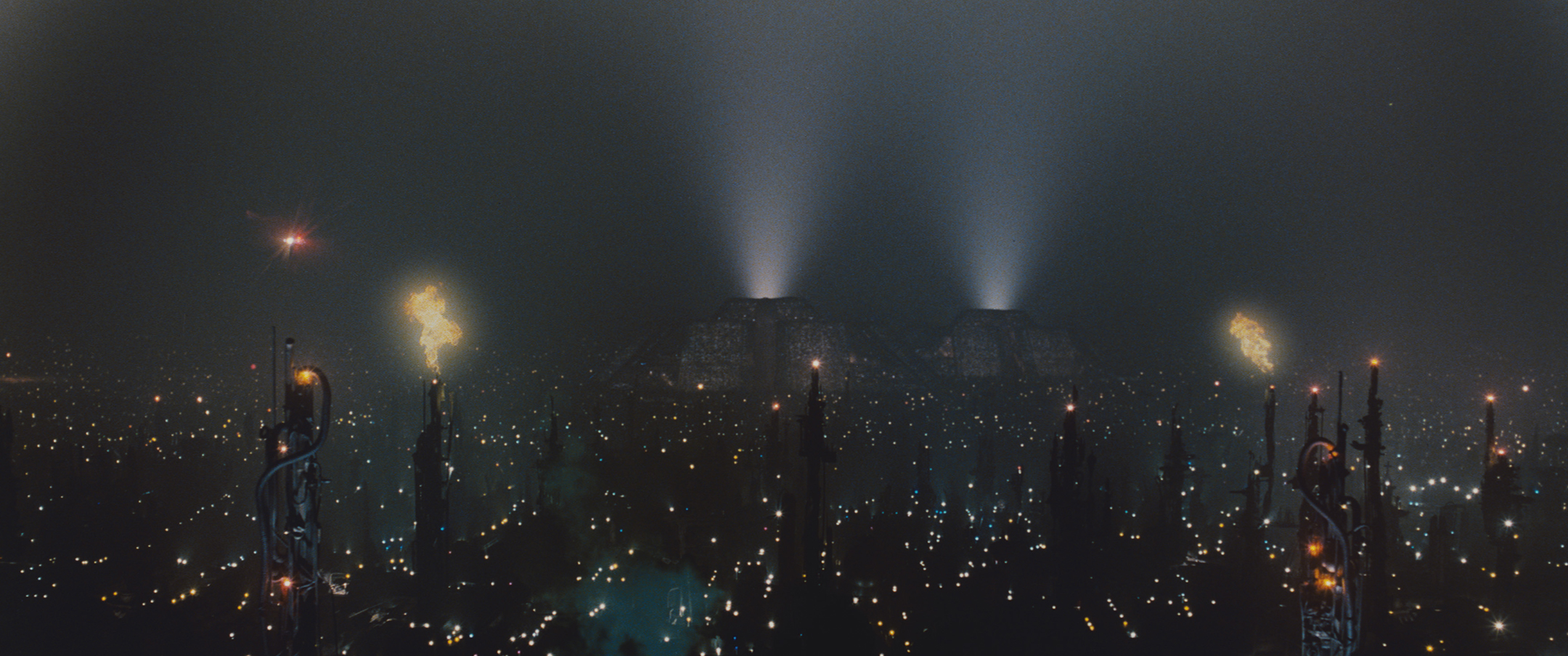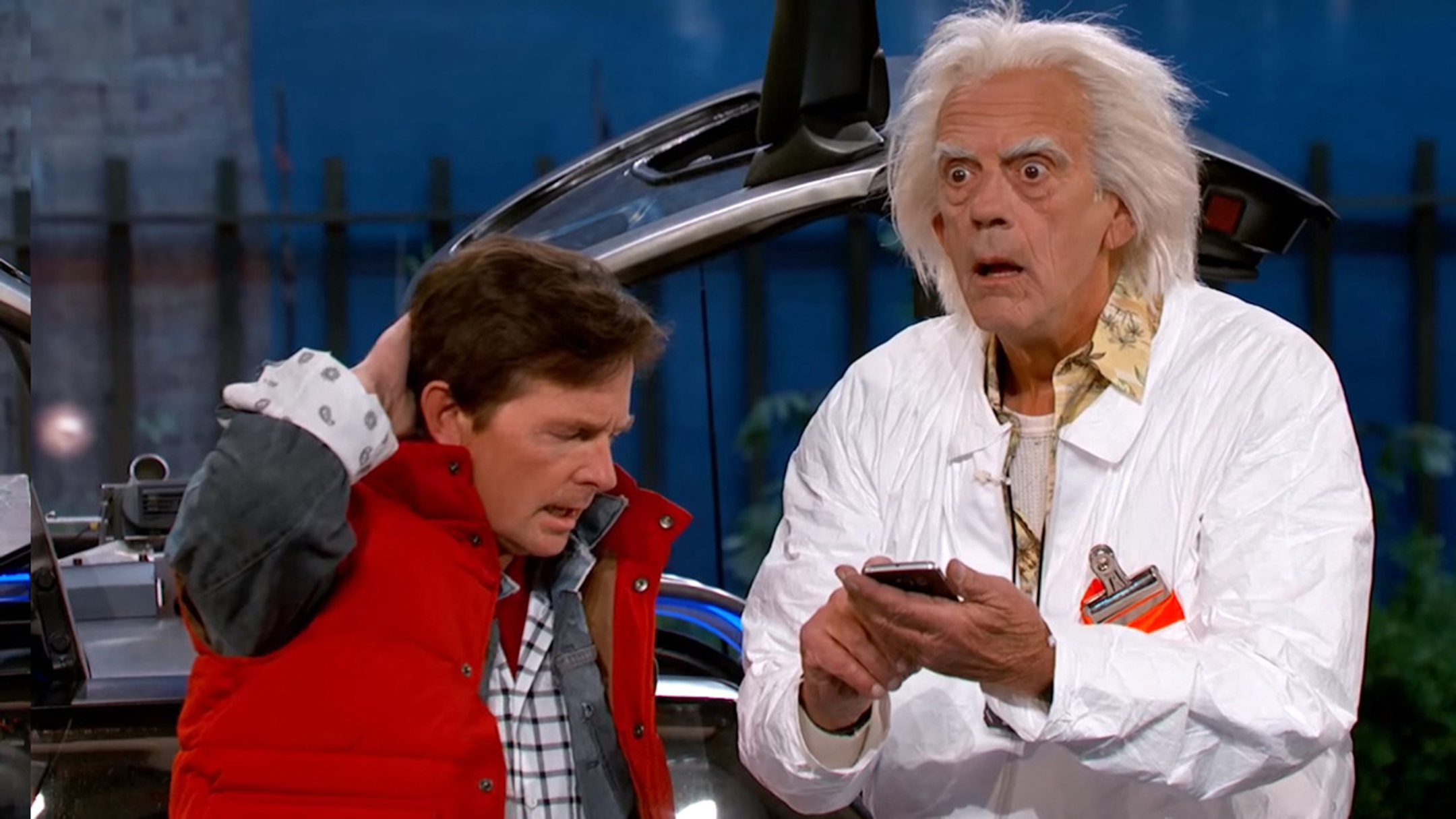
In Our Feeds
Fusion Pops, ChatGPT Emerges, and Contronyms Reflect: Five Things That Made Us Smarter This Week
From the future of energy to the future of essays, we learned a lot in the last seven days
We’re living in a world awash with content—from must-read articles and binge-worthy shows to epic tweetstorms and viral TikToks and all sorts of clickbait in between. The Elective is here to help cut through the noise. Each week, members of the Elective team share the books, articles, documentaries, podcasts, and experiences that not only made them smarter but also changed how they see the world around them and, often, how they see themselves.

Dimitri Otis/Getty Images
Contronym, but for people and not words.
Opposites Attract
“I contain multitudes,” wrote Walt Whitman in “Song of Myself”. “Do I contradict myself? / Very well then I contradict myself.” The great poet would have appreciated this fascinating list of contronyms, words that are their own opposites. Sanction, oversight, dust, seed, transparent—simple words I’ve used thousands of times without quite realizing they’re living a double life. If I toss out an idea, have I suggested it or discarded it? If my views on the subject are transparent, does that mean they’re plain to see or hiding in plain sight? And if I sanction your plan, am I giving you my blessing or trying to keep you from succeeding? “The contronym (also spelled ‘contranym’) goes by many names, including auto-antonym, antagonym, enantiodrome, self-antonym, antilogy and Janus word (from the Roman god of beginnings and endings, often depicted with two faces looking in opposite directions),” according to Judith Herman at Mental Floss. Janus definitely contained multitudes.
I’ve always been a word nerd, the kind of kid who read the thesaurus and recited favorite examples to my parents at the dinner table. As I went from logophile to logomaniac, Mom and Dad begged me to take up sports or juvenile delinquency or anything a bit more normal, but the fascination with quirks of language and meaning never went away. In school, most of the focus on reading and writing is about achieving clarity, finding ways to deploy language to convey ideas and arguments in the most straightforward and convincing way possible. But the deeper you go into poetry, literature, and the maddening world of corporate jargon, the more you understand the capacity of language to obscure and complicate. Words are a human creation, after all, and people don’t always want to be deciphered. “I'm a man of contradictions, I'm a man of many moods,” sang Bob Dylan, drawing inspiration from Whitman. “I contain multitudes.” We are all contronyms to ourselves. —Stefanie Sanford

Warner Bros.
Maybe the urban eco-nightmare of the future, depicted in "Blade Runner," was an exaggeration. (As long as we keep Taylor Swift's private jet grounded, that is...)
Cutting Through the Smog
I've alternated between feeling amused and indignant over data on celebrities' carbon emissions via private jet usage. Taylor Swift—who topped the list while not even touring—spewed 8,293.45 tonnes of CO2 in the first half of 2022, 1,194.8 times more than the average person in a year. It’s definitely a topic for holiday party conversation. And so is the climate-impact analysis of households across census tracts. The work was done by the EcoDataLab and the University of California, Berkeley, and the New York Times converted it into user-friendly interactive maps that are searchable by your nearest metropolitan area. The analysis revealed a pattern. Households in denser neighborhoods in city centers were responsible for emitting fewer greenhouse gasses, on average, than households in the rest of the country. The reasons make sense. City dwellers walk, bike, or use public transit more frequently and are less likely to live in large, single-family homes that require more energy to heat and cool. Another conclusion was that wealthy Americans tend to have a larger climate impact, as they often travel frequently and own more cars, appliances, and electronics. While many wealthy Americans live in suburbs, the interactive maps also help pinpoint varying socioeconomic levels within cities using climate impact. For example, New York City maps show rich households on the Upper East Side are responsible for more greenhouse gas emissions than others only a few blocks away. My neighborhood was on par with the nation's average climate impact, but while households where I live tend to have lower transportation-related emissions than average, our food and goods-related footprint was higher than average. This lined up with my own habits. While I walk, bike, or bus almost everywhere, I rarely think twice about my food and goods consumption or its impact on the environment. The Times piece is more than just maps, though. It also delves into the intersection of climate change and affordability and possible policy solutions that can help the government and local leaders reduce emissions. —Hannah Van Drie

ANDRZEJ WOJCICKI/SCIENCE PHOTO LIBRARY/Getty Images
ChatGPT is the Terminator, but for English class. And student essay writing. And rhetorical development. And authentic human communication.
A Chatbot Did Not Write This Blurb (or DID IT?!)
I joined a faculty luncheon at UNC Chapel Hill last week, and all the talk was about ChatGPT, the astonishingly sharp artificial intelligence chatbot created by OpenAI. You can give this thing a plain-language prompt—think of every essay or short-answer assignment you were ever given in college and high school—and it will instantly crank out clear, fluid, and occasionally cheeky writing. Several of my professor friends have been feeding it the prompts they use for their exams about everything from religious history to neuroscience, and they’re terrified at how much better ChatGPT is than the average student in their classes. “Natural-language processing presents the academic humanities with a whole series of unprecedented problems,” writes The Atlantic’s Stephen Marche in one of many, many pieces predicting chaos and disruption in classrooms across the world. “Practical matters are at stake: Humanities departments judge their undergraduate students on the basis of their essays. They give Phds on the basis of a dissertation’s composition. What happens when both processes can be significantly automated?”
It’s a great question, especially when you consider how much of a role writing plays in pushing students to think clearer. “Essay writing is most often assigned not because the result has much value — proud parents putting good grades on the fridge aside — but because the process teaches crucial skills,” writes Zeynep Tufekci in an op-ed for the New York Times. “Researching a topic, judging claims, synthesizing knowledge and expressing it in a clear, coherent and persuasive manner. Those skills will be even more important because of advances in A.I.” The struggle to write clearly is really the struggle to think clearly, and educators are understandably worried about what it will mean for students to have a shortcut through that process. Not everyone is panicky; there are arguments that natural-language software like ChatGPT will actually improve writing by training students how to do it better, letting humans do the higher-level work of editing and refining. In that vision, ChatGPT becomes for English class what the graphing calculator is for math—an advanced tool that students master, something that enhances thinking instead of doing it for you. “In the future, A.I. like ChatGPT can be used in the classroom to generate text that students then fact-check and edit,” writes Daniel Lametti in Slate. “These bots solve the problem of the blank page by providing a starting point for papers.” That certainly sounds convenient, but terror of the blank page is where creativity and motivation begin. A lot of human writing is awful, but at least it’s original. —Eric Johnson

Jimmy Kimmel Live/YouTube
"Marty! If my calculations are correct, we've traveled to a time when fusion has finally worked! Mr. Fusion will finally be more than an expensive decoration for the DeLorean!" "Whoa, this is heav... Hey, what was that about Mr. Fusion?"
We’ve Got Mr. Fusion, Right?
Cool on-screen gadgets in 1980s movies and TV introduced kid me to all sorts of scientific terms: “sonic,” thanks to Dr. Who’s do-it-all screwdriver; “proton” from the Ghostbusters’ nuclear-reactor backpacks, er, proton packs; and “fusion,” key to Back to the Future’s DeLorean “Mr. Fusion” fuel source. That last one leaped to my mind this week with the news out of Lawrence Livermore National Laboratory that, at around 1:03 am on December 5, scientists achieved a nuclear fusion breakthrough. Utilizing 192 giant lasers, scientists produced an energy gain by a factor of 1.5 more than the amount used to extract it. As Kenneth Chang of the New York Times notes, “This crossed the threshold that laser fusion scientists call ignition, the dividing line where the energy generated by fusion equals the energy of the incoming lasers that start the reaction.” In short, humans are beginning to successfully replicate the enormous energy generation process utilized by the sun, if only at a currently-minute level.
Elsewhere in the Times coverage of this landmark achievement, Maya Phillips expounds on how both 20th and 21st century pop culture has helped our world understand (and be entertained by) the long-elusive power of fusion, writing, “The promise of a new, bountiful energy source, not to mention the giant lasers, may sound familiar to fans of science fiction and comics.” In addition to Doc Brown’s handy-dandy Mr. Fusion, she references the small sun-like fusion reactor created by Dr. Octopus in Spider-Man 2 and the limitless energy of Tony Stark’s arc reactor in the Marvel Cinematic Universe. Additionally, she points out that “comic book protagonists like Captain Atom and Doctor Solar have bodies that can manipulate atoms to create blasts of energy. Firestorm, who was a regular in the CW’s Arrowverse, can change the particle structures of any substance and transmute it; and he himself is a kind of metaphor for the power of fusion, in that he was, in his first incarnation, a combination of two different people.” That’s all well and good, but could those Marvel and DC heroes and villains use random items out of a trash can to fuel a reaction that powers a time-traveling sportscar? That’s the kind of 1980s-style infomercial convenience for the average consumer that will one day let fusion basically sell itself. —Christian Niedan

Minneapolis Star-Tribune
Outside the Westgate theater, in the Minneapolis suburb Morningside, moviegoers protest that it's still running the Hal Ashby film "Harold and Maude" for, as the marquee states, a third consecutive year.
In the Multiplex of Cinemania
Film Studies major, film critic/editor, arts journalist, moviegoer—I like to think I know a thing or two about motion pictures. Which is why it’s so invigorating when I come upon something that illuminates and expands my understanding (and love) of filmdom. Something like the MUBI Podcast, whose second six-episode season was devoted to movie theaters that changed film history. This might sound obtuse and nerdy—you’re right on the second one—but it’s an amazing listening experience, particularly if you like going to the movies. The first episode focuses on The Cinémathèque Française, the focal point of the French New Wave, and, yes, it’s important. It’s also pretty well-trod ground. The next five, though, are decidedly not: New York’s Elgin, which launched the midnight movie; the Westgate, in suburban Minneapolis, which turned Harold & Maude into a cult hit; the Scala Cinema, an unholy oasis of punk and cinema in Thatcher’s Britain; the Dryden Theatre, in Rochester, and its crusade to preserve nitrate cinema; and the Majestic, in Zanzibar, a dilapidated palace and “last cinema standing” in the country. Each episode is pop culture history at its best: engaging, conversational, brilliantly enlightening, and completely accessible. You don’t need to be a film nerd to enjoy them. And at roughly 40 minutes each, they’re the perfect length (though I absolutely could’ve listened to the episodes on the Elgin, Westgate, and Scala for 400 minutes). I love this podcast for how it made me smarter about an art I love, but also for how it reflected, validated, and boosted my love of moviegoing generally and movie theaters particularly—no small feat in this defeatist post-pandemic moment when everyone seems to want the movie theater to just die already. (Side note: Movie theaters are communal experiences, streaming not so much. In this time of division and community fracture, we should be begging people to go to theaters and rub elbows and share laughs and scares and cries with their neighbors.) If you have any kind of fond moviegoing memories, you should give this podcast a listen and remember why moviegoing is so much fun. Start with the Westgate and dive in from there. (And find a good Westgate remembrance from the Minneapolis Star-Tribune on the occasion of the theater’s demise. RIP.) —Dante A. Ciampaglia


